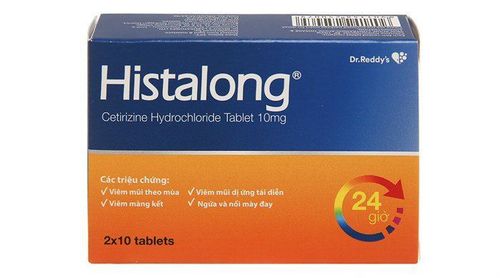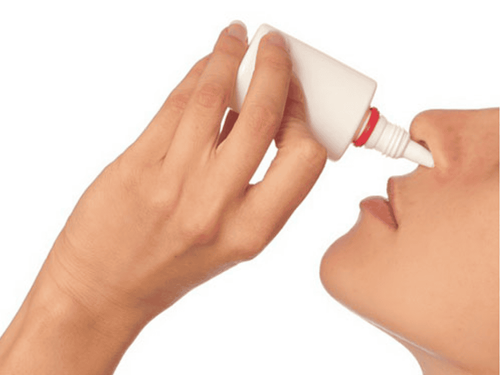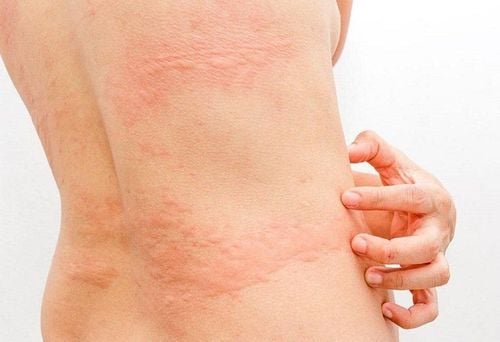This is an automatically translated article.
Cedetamine is used in the treatment of a number of diseases such as allergic rhinitis, urticaria, ... Besides the question about the use of the drug, many people wonder about this drug such as: Cedetamine for children can i use it? What is Cedetamine? Check out the article below for more useful information.
1. What is Cedetamine?
Cedetamine is produced in the form of tablets, with the main ingredient in each tablet is:
Betamethasone 0.25mg Dexchlorpheniramine maleate 2mg Betamethasone is a synthetic corticosteroid, it has a very strong glucocorticoid effect, accompanied by negligible mineralocorticoid effects. tell. 0.75 mg of betamethasone will have an anti-inflammatory effect equivalent to about 5 mg of prednisolone. Betamethasone has anti-inflammatory, anti-allergic and anti-rheumatic effects. Because it has little mineralocorticoid activity, betamethasone is well suited in medical conditions where fluid retention is detrimental.
Dexchlorpheniramine maleate is an H antihistamine, it has a propylamine structure, has the following properties:
Sedative effect at usual doses due to its antihistaminic and CNS depressant effects. Anticholinergic effects cause peripheral side effects. Peripheral adrenal suppression may affect blood dynamics (possibly causing orthostatic hypotension).
2. Indications and contraindications of Cedetamine
Cedetamine is indicated in the following cases:
Seasonal allergic rhinitis and perennial allergic rhinitis when treatment has failed with antihistamines alone or topical corticosteroids. Symptomatic treatment of acute urticaria for a short time (up to 10 days). On the other hand, Cedetamine is contraindicated in the following cases:
Infections. Some viral diseases such as hepatitis, herpes, chickenpox, shingles. Uncontrolled mental disorder. People at risk of urinary retention related to prostatic urethral disorders. People at risk for angle-closure glaucoma. Children under 6 years old. Breastfeeding Women who are taking antiarrhythmic drugs because of possible torsades de pointes.
3. Dosage and how to use Cedetamine
Cedetamine is used orally. Dosage of Cedetamine should be according to the doctor's instructions. The recommended dose in specific cases is as follows:
Adults and children over 12 years old: Use a dose of 1 tablet x 3-4 times/day. Children from 6 to 12 years old: Use 1 tablet / time, take 1 time in the morning and once in the evening. The lowest dose of Cedetamine can be reduced to 1 tablet every 2 days and the dose is gradually reduced. The usual duration of treatment for acute urticaria with Cedetamine is not more than 10 days, when stopping the drug, the dose must also be gradually reduced. Symptoms that may be encountered with an overdose of Cedetamine include: Dizziness, ataxia, hypotension, tinnitus, convulsions, cardiovascular collapse, coma, psychosis, adrenal insufficiency, muscle weakness . In this case, it is necessary to induce vomiting or gastric lavage, then treat symptomatically and supportively.
If you forget a dose of Cedetamine, take another dose as soon as you remember. However, if it is almost time for your next dose, skip the missed dose and resume your usual dosing schedule.
4. Cedetamine side effects
During the use of Cedetamine, you may encounter some side effects of the drug.
Common side effects of Cedetamine include:
Potassium loss, sodium retention, water retention Irregular menstruation Cushing's syndrome Inhibition of fetal growth in utero and in young children. Reduced glucose tolerance Reveal latent diabetes Increased need for insulin or hypoglycemic agents in patients with diabetes. Muscle weakness, loss of muscle mass. Osteoporosis Skin atrophy Sterile abscess. Abdominal pain Constipation. Difficulty urinating, risk of urination. Drowsiness Insomnia Dizziness Decreased memory or concentration Mental disorder Hallucinations. Tachycardia orthostatic hypotension. Dry mouth, nose, throat. Less common side effects of Cedetamine include:
Feeling refreshed, mood swings Severe depression Insomnia. Glaucoma Cataracts, blurred vision. Stomach ulcer and possibly subsequent gastric perforation and bleeding. Pancreatitis Abdominal distension Esophageal ulcers. Stress Irritation Erythema, eczema, edema. Rare side effects of Cedetamine include:
Atopic dermatitis Urticaria Acne Purpura Bruising Angioedema. Benign intracranial hypertension Convulsions. Arterial hypertension Congestive heart failure. Angioedema Anaphylactic shock Leukopenia, thrombocytopenia Hemolytic anemia.
5. Interaction of Cedetamine with other drugs
When using Cedetamine together with high doses or prolonged paracetamol will increase the risk of hepatotoxicity. Concomitant administration of Cedetamine with tricyclic antidepressants may increase psychotic disorders. Concomitant administration of Cedetamine with oral antidiabetic agents or insulin may cause an increase in blood glucose levels, so it is necessary to adjust the dose of one or both drugs when administered concurrently. The use of Cedetamine with Glycoside digitalis may increase the likelihood of arrhythmias or digitalis toxicity associated with hypokalemia. Concomitant administration of Cedetamine with phenobarbital, phenytoin, rifampicin or ephedrine may increase the metabolism of corticosteroids, and thereby reduce the therapeutic effect. Patients taking Cedetamine with estrogen may increase the therapeutic effect and toxicity of glucocorticoids. Concomitant administration of Cedetamine with coumarin-type anticoagulants may increase or decrease the anticoagulant effect, which may require dose adjustment. Concomitant use of Cedetamine with non-steroidal anti-inflammatory drugs or alcohol may lead to increased occurrence or severity of peptic ulcers. When taking Cedetamine may increase the concentration or effect of cholinesterase inhibitors, cyclosporin, amphotericin B, loop diuretics, natalizumab, thiazide diuretics. Some drugs, when used with Cedetamine, will increase the concentration or effect of betamethasone such as: azole antifungals, quinolone antibiotics, macrolides, trastuzumab, calcium channel blockers. The use of Cedetamine with monoamine oxidase inhibitors (MAOIs) can cause severe hypotension. Concomitant administration of Cedetamine with alcohol, tricyclic antidepressants, barbiturates or other central nervous system depressants may potentiate the sedative effect of dexchlorpheniramine. The dexchlorpheniramine maleate in Cedetamine inhibits the metabolism of phenytoin and can lead to phenytoin toxicity.
Please dial HOTLINE for more information or register for an appointment HERE. Download MyVinmec app to make appointments faster and to manage your bookings easily.













